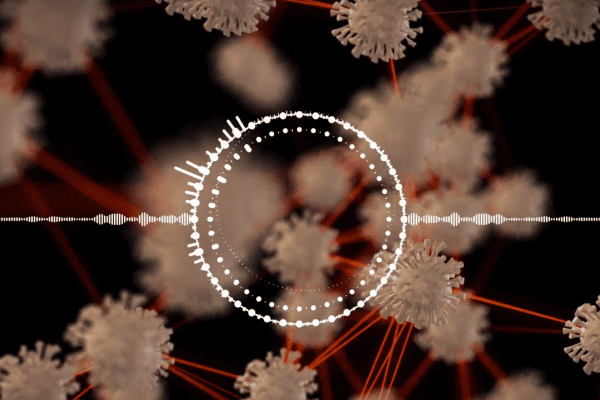Four Takeaways: Visualizing the COVID-19 Pandemic

As the United States battled a drastic resurgence in COVID-19 cases last summer, a group of UNC Charlotte researchers aggregated, analyzed and visualized publicly available data to produce an interactive dashboard to better understand the rapid spread of the virus.
Two of the project’s collaborators – Jean-Claude Thill, an associate professor for UNC Charlotte’s School of Data Science and professor in the department of geography and earth sciences, and Rajib Paul, an associate professor in the School of Data Science and the department of public health science – discussed their project in a recent interview with Charlotte Business Buzz, the Belk College’s podcast series.
Here are four takeaways from the episode.
1. Evidence-based research can improve quality of life and business profitability.
By training students in evidence-based research, UNC Charlotte is giving them a working knowledge of data analysis and an understanding of data in relation to social relationships and environmental context to the community, Thill says. “Whether they end up working in the private or public sector, they will have the ability to articulate the kind of decisions that need to be made in order to do better and enhance society,” he says.
2. The interactive COVID-19 dashboard helps users to track basic epidemiologic measures by state and county from where they are.
“With our dashboard, users are able to wake up in the morning and obtain information on a seven-day average of [COVID-19] infection rates within their state and county before leaving for work,” Paul says.
3. Data visualization maps foster community health knowledge.
“Our dashboard’s ability to zoom in and out at both the state and county level can be quite revealing in terms of the life experiences and the pandemic intervention measures that local public officials may have put in place,” Thill says. “It also allows us to compare the differential behavior that residents of different communities exhibit in the face of this pandemic and adversity that results from it.”
4. Data science research leads to more informed decisions.
Paul says a goal of the project was to combine multiple data visualization models to create a consensus estimate of how the pandemic will evolve over time and space, and “then assess where and why these models agree and disagree, uncovering the inherent uncertainties associated with it to lead to more informed public policy decisions now and in the future.”
Thill says businesses and government agencies must analyze individuals and their behaviors as they respond to the pandemic and establish measures to prevent community spread of the virus. “To this day, many businesses have deliberately made the choice to not call their workers back to contain the pandemic and make sure the effect of the pandemic, in terms of infection rates, casualties or death, are minimized, even though we’re hitting obviously some very high numbers, among the highest in the world at this stage.”